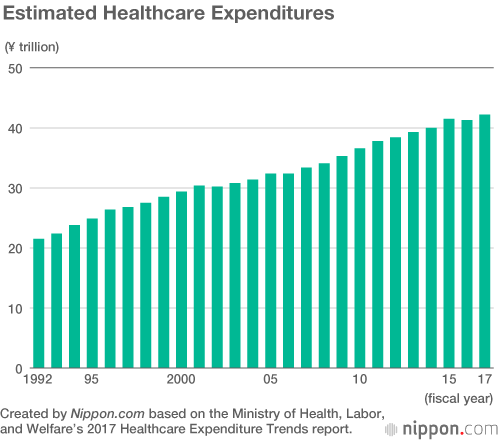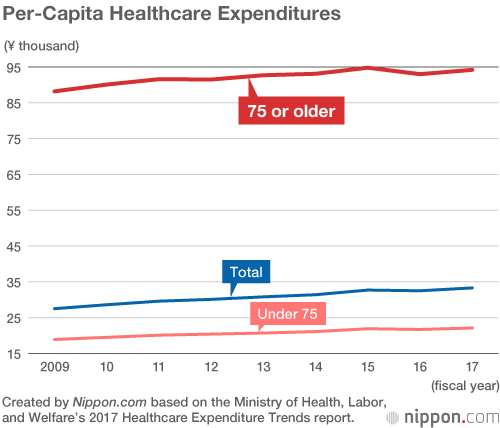
Japan Spends Record ¥42.2 Trillion on Healthcare in 2017
Politics- English
- 日本語
- 简体字
- 繁體字
- Français
- Español
- العربية
- Русский
A record high of ¥42.2 trillion was spent on healthcare in Japan in 2017, according to an estimate released by the Ministry of Health, Labor, and Welfare. This was a year-on-year increase of ¥950 billion. These preliminary figures do not include healthcare expenditures related to occupational injuries and cases where payment was fully borne by patients, so it represents around 98% of the officially confirmed figures for healthcare expenditures to be released a year later. The expenditures for fiscal 2016 were ¥42.1 trillion, having fallen 0.5% from fiscal 2015 in the first year-on-year decrease since fiscal 2002. The data for fiscal 2017 suggests, however, that the overall trend toward rising healthcare expenditures remains unchanged.

One factor behind the increasing expenditures on healthcare is the steadily rising number of expensive drugs used for certain diseases covered by insurance, such as Harvoni and Sovaldi to treat Hepatitis C or Opdivo to treat cancer. The primary cause, however, is the aging of the Japanese population. Among the estimated healthcare costs for fiscal 2017, expenditures for patients 75 or older were ¥16 trillion, a year-on-year increase of ¥680 billion. More than 70% of the overall increase in healthcare expenditures stemmed from increases in spending for this elderly cohort.
Per capita, the expenditures on those 75 or older were ¥942,000 on average (up ¥12,000 year on year) compared to ¥221,000 (up ¥4,000) for those under 75. In other words, the medical costs for those 75 and older are four times the amount for those in younger age brackets.
Healthcare expenditures in Japan are likely to increase even more from around 2022, as Japan’s baby-boom generation enters the ranks of the elderly en masse.
